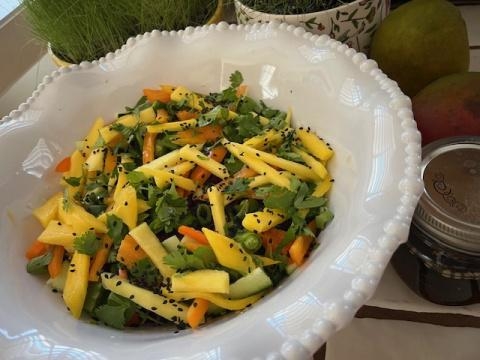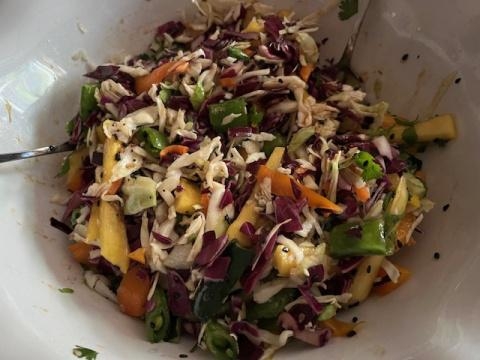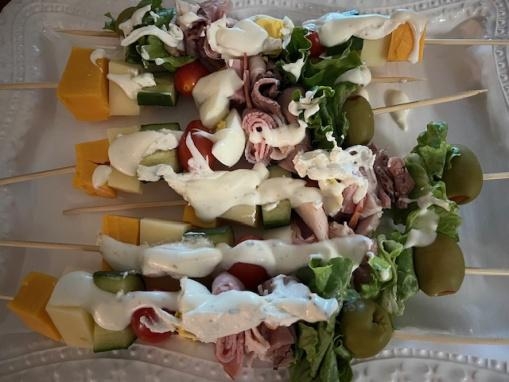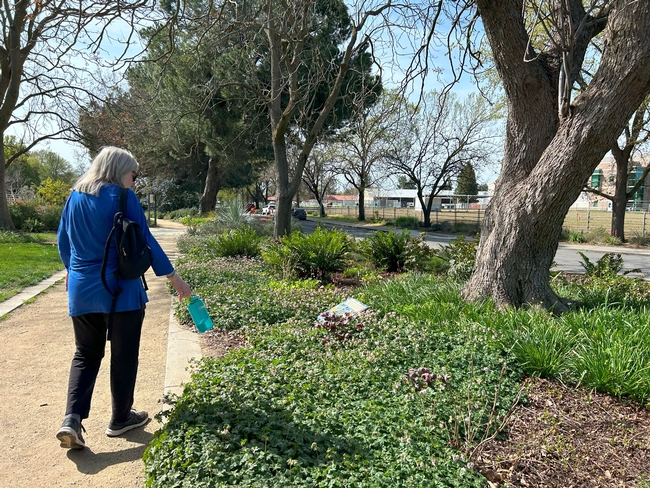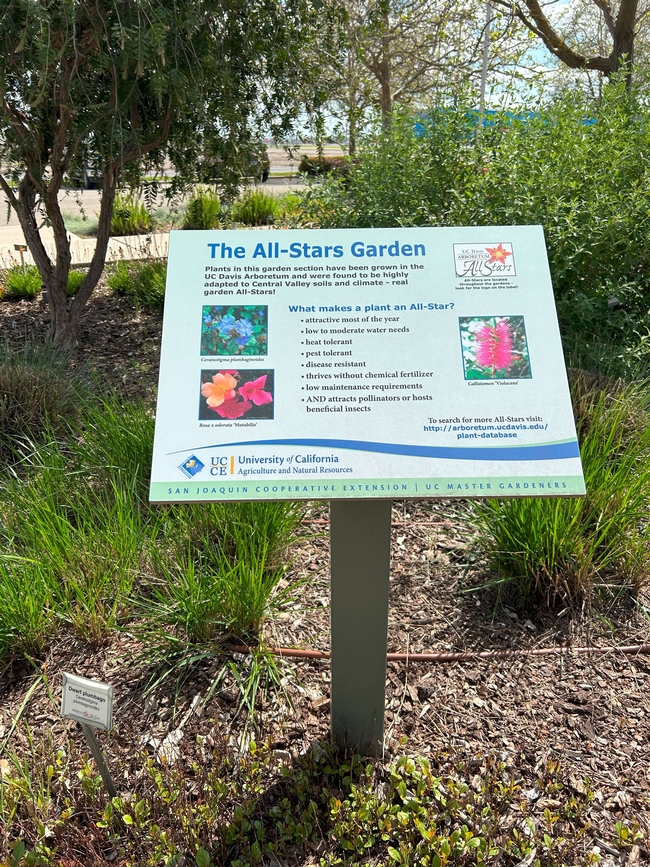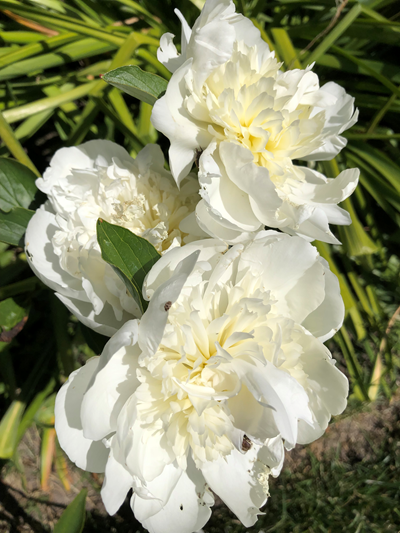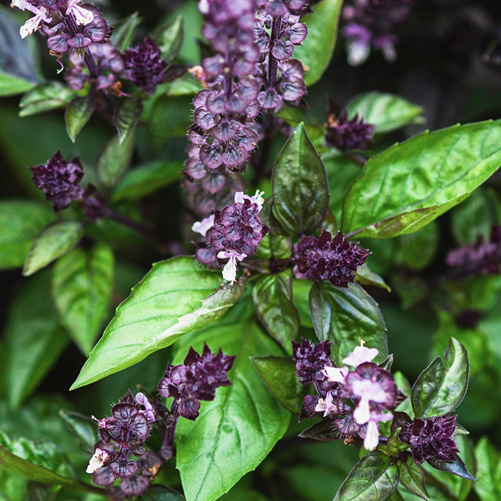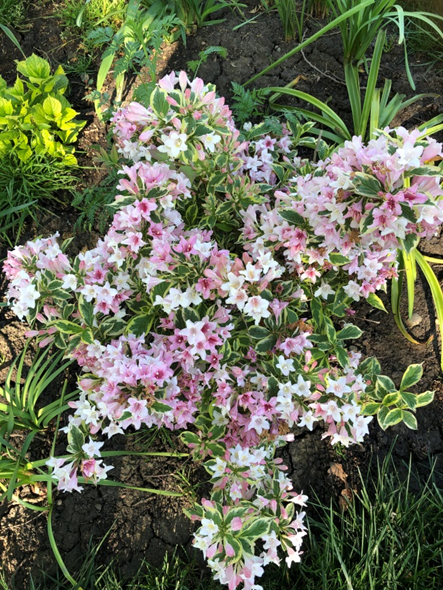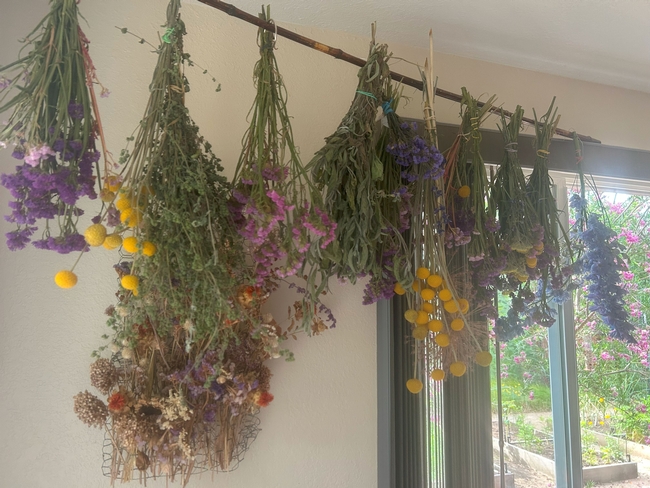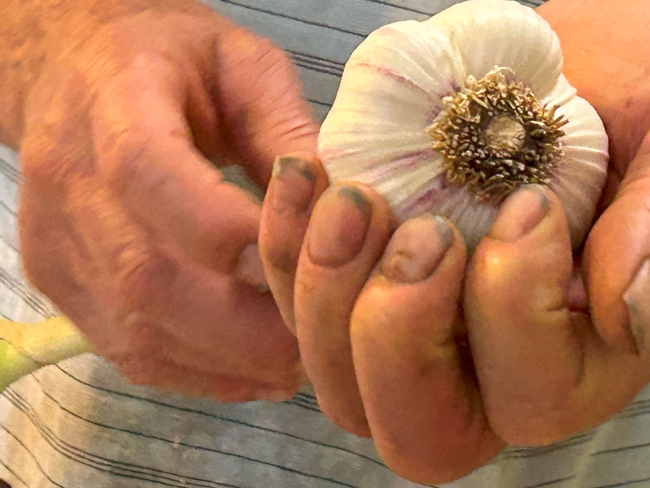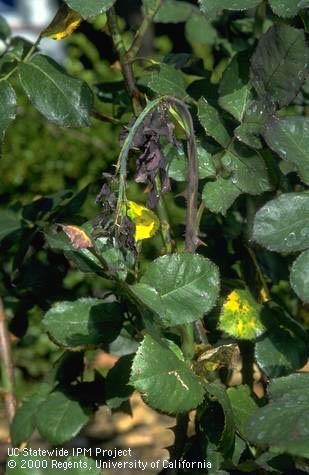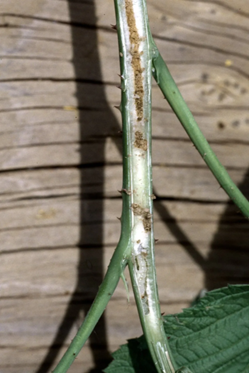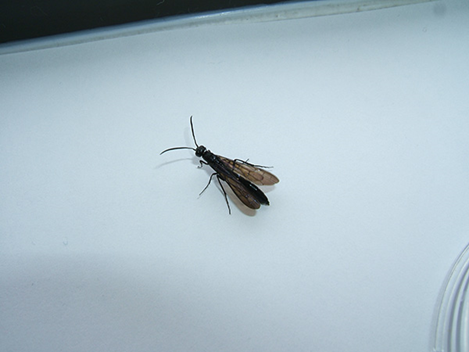- Author: Julie Hyske, Master Gardener
The key to summer salads is fresh ingredients. So, whether you head out to the garden or the local farmer's market, be sure to sample the bounty of summer's harvest. The following salad recipes are inviting you to make some new additions to your summer menu, while guaranteeing to be anything but boring. The mango cucumber summer slaw is cool and crisp and as a bonus can be served on burgers, wraps, sandwiches or as a side dish. No bowl is required for the chef's salad on a stick, assembled with all the classic fixings of meats, cheeses, hard-boiled eggs and veggies. The southwestern tostada salad is a new way to eat a salad with every bite having a crunch and topped with a homemade creamy lime-cilantro dressing. Bacon cheeseburger salad takes all the elements of your favorite food and turns it into a salad with lettuce and tomatoes forming the bed, mini cheeseburgers nestled within, and seeded buns toasted to give a toasty crunch. Now you've got the idea of how a favorite salad can highlight the season's best produce offerings. Enjoy!
Mango Cucumber Summer Slaw
Ingredients
Salad
½ large cucumber, split lengthwise, seeded, and julienned
1 ripe mango, peeled and julienned
2 cups green shredded cabbage
¾ cup bite-sized cut snap peas
¾ cup red shredded cabbage
1 medium red bell pepper, sliced and julienned
1 jalapeno pepper, seeded and julienned
? cup roughly chopped cilantro
Vinaigrette
½ cup sesame oil
1 tsp. kosher salt
1 Tbsp. rice vinegar
1 Tbsp. lime juice
1 Tbsp. honey
1 Tbsp. sesame seeds
1 Tbsp. soy sauce
½ tsp. fish sauce
Optional additional sesame seeds as a garnish
Whisk together sesame oil, salt, rice vinegar, lime, honey, seeds, soy sauce and fish sauce. Place in a small mason jar. Prepare the veggies, mango, and cilantro in a large mixing bowl. Add the dressing and toss. If you wish, garnish with additional sesame seeds. This slaw can be served on burgers, wraps, sandwiches or as a side dish. Serves 6
Chef Salad on a Stick
Ingredients
4 hard-boiled eggs
½ English cucumber
3 oz. deli ham, thick cut
3 oz. deli turkey breast, thick cut
3 oz. deli roast beef, thick cut
6 oz. Swiss cheese block
6 oz. cheddar cheese block
1 small head leaf lettuce
16 cherry tomatoes
8 large green olives
8 12-inch skewers that have been soaked in water
Ranch dressing
Black pepper
Cut each hard-boiled egg into 4 pieces. Slice the cucumber lengthwise, then cut into half circles about half an inch thick. Cut the ham, turkey and roast beef slices lengthwise into 1-inch-wide strips. Roll each strip into a pinwheel. Cut the Swiss and cheddar cheese blocks into 16 squares. Alternating pieces, place 2 pieces of cheese, cucumber, tomato and egg on a skewer. Add one pinwheel each of ham, turkey, and roast beef. Add 3 small pieces of lettuce that have been folded into bundles on each skewer and finish up with a green olive. Serve on a platter and refrigerate up to 4 hours before serving. Before serving, top with ranch dressing and a shake of black pepper.
Serves 8
Southwestern Salad Tostada
Ingredients
Tostada
2 Tbsp. avocado oil
6 corn tortillas
Kosher salt
3 Tbsp. shredded Mexican cheese
Dressing
½ light sour cream
2 limes, juiced
¼ cup mashed avocado
? cup chopped cilantro
1 minced clove garlic
¼ tsp. salt
¼ tsp. pepper
Salad
4 cups Romaine, sliced thin
¾ cup cherry tomatoes, sliced
1 avocado, diced
½ cup black beans
½ cup frozen corn
¾ cup shredded Mexican cheese
Toppings
Shredded Mexican cheese
Avocado, sliced
Preheat oven to 400 degrees and drizzle 2 tablespoons avocado oil on a large baking sheet. Rub both sides of each tortilla in the oil and sprinkle with salt. Bake for 8 minutes on the first side, flip, and sprinkle 1 teaspoon cheese on each tortilla and bake for 4-6 minutes more until golden brown and crispy.
In a blender or using a whisk, blend together the dressing ingredients and set aside. Place the ingredients for the salad in a bowl and add half the dressing, toss, and add more dressing to your liking. Next, season with salt and pepper to your taste. Serve the salad on the tostada shells with some additional toppings of cheese and slices of avocado.
Serves 6
Bacon Cheeseburger Salad
Ingredients
3 sesame seeded buns, cut into 1-inch cubes
¼ cup salted butter, melted
1½ lbs. ground chuck steak
1 Tbsp. Worcestershire sauce
Kosher salt and freshly ground black pepper
3 slices yellow American cheese, cut into quarters
3 hearts romaine lettuce
½ cup dill pickle slices
¼ cup pickle juice from the jar
1 lb. cherry tomatoes, halved
½ small red onion, thinly sliced into rings
6 slices cooked bacon, halved width-wise
Thousand Island dressing, for serving
Preheat oven to 350?. Toss the cubed buns into a medium bowl with the melted butter, then place on a rimmed baking sheet. Bake until toasted, about 10 minutes. Preheat a skillet on medium heat. Stir together the beef, Worcestershire sauce and a dash of salt and pepper in a large bowl until combined. Make into 12 meatball-size patties. Place the patties in the skillet, in batches if necessary, and cook until browned on the first side, about 2 minutes. Flip and top each with a quartered slice of cheese, then cook for 2 minutes more. Meanwhile, roughly chop the lettuce. Place in a large bowl along with most of the pickles, most of the tomatoes and most of the red onion, reserving the leftovers for garnish. Drizzle with the pickle juice and sprinkle with another dash of salt and pepper; toss to coat. Just before serving, top the salad with the burger patties, croutons and bacon, plus the remaining pickles, tomatoes and red onion. Top with Thousand Island dressing.
Serves 6
- Author: Kathy Grant, Master Gardener
Ellen Zagory was Director of Horticulture of the UC Davis Arboretum and Public Gardens, fondly referred to as the Arb, when the Arboretum All-Stars plant list came to be created in the early 2000s. Ellen was working in her tiny office space alongside Diane Cary, who at the time was a grant writer working on the idea of developing a list of drought-tolerant landscape plants that could be studied in rigorous UC Davis trials, then recommended to California gardeners, eventually to be sold at future Arb plant sales. Diane suggested “Arboretum All-Stars,” to which Ellen gave a thumbs down, saying it was too sports-like, but the catchy name stuck, and the rest is history.
According to Ellen, “In order to create the list that ended up as our top 100 All-Stars, we developed strict criteria for selecting plants. We wanted plants that first and foremost needed very little water. They had to be attractive, easy for both beginning and advanced gardeners to grow, and have few problems with pests or diseases. We also especially wanted plants that supported native wildlife, such as birds and beneficial insects, and provided a variety of alternatives for year-round interest. We voted on those plants that we all felt best fit the criteria. And the Arboretum All-Stars were born!”
“We then developed an online database and planting plans, as well as signage on All-Star plants in the Arboretum. At the Arboretum Teaching Nursery, we created demonstration gardens so people could easily see what an All-Star garden would look like. Many funders and donors, including our wonderful Friends of the UC Davis Arboretum and Public Garden, supported this work over the years through grants, gifts, and time. Some supported the All-Stars Program directly, while others supported our nursery and plant sales program, which promote the All-Stars.” Learn more about caring for the All-Stars or visiting the UC Davis Arboretum website.
Arboretum All-Star Trials Kick Off Statewide Sustainable Landscape Movement
Also serving on the original Arboretum All-Star panel were Karrie Reid, later San Joaquin County Environmental Horticulture Advisor, and Dr. Loren Oki, UC Cooperative Extension Specialist. Oki was also the principal investigator of the Climate-Ready Landscape Plants project, which may be the largest irrigation trial in the western U.S., and the UC Plant Landscape Irrigation Trials, the California component of that project. https://www.plantsciences.ucdavis.edu/news/oki-retires
Karrie was working as his staff research associate, and later continued to do plant trials after she graduated. She was able to expand the trials from one field to two fields, then added the shade structure field, and incorporated Master Gardener demonstration gardens throughout the state as part of the trials. She also assisted with outreach material for a big urban runoff study that Loren was doing jointly with a team in Southern California. In addition, she served on the WUCOLS water use committee for this region. (See the article on WUCOLS in this issue of our newsletter.) All of this groundbreaking work was done alongside Missy Gable, current head of the California Master Gardener program, and Ellen Zagory.
Those early trials helped establish the plant list as we know it. Reading one of Karrie's final reports is enlightening. As Karrie put it, “A few studies had been done in Southern California on grass, a few plants, and a few plant combinations in landscapes, but none were done with the scientific study design that Loren had conceptualized. Ours was, and still is, completely unique in both the number of plants on each irrigation treatment and in the way that we irrigated, which was to alter the timing rather than the amount of water given. So, not first, but first of its kind. And again, the credit goes to Loren. The parameters in the methods for evaluating the plant performance were my development.”
The Learning Landscape: Stockton's Master Gardener Demo Garden Thrives
Sustainable landscapes and smart plant choices can be seen tucked away on the southern edge of Stockton, at the San Joaquin's County's Robert Cabral Agricultural Center at 2101 E. Earhart Avenue, near the Stockton Airport. Thanks to the hard work of many San Joaquin County Master Gardeners and Karrie Reid, a demonstration garden was created featuring many of the Arboretum All-Stars. The demo garden is open 24/7 and is divided into six gardens: the All-Star Garden, the Edible Landscape, the Mediterranean Garden, the Edible Garden, the Pollinator Garden, and the California Garden. Learn more by clicking here.
Moving Forward: Future Favorites and Climate-Ready Plant List
Ellen's successors at the Arboretum have selected a shorter list of plants to recommend for Central Valley gardens based on their low water needs, drought tolerance, habitat value and beauty to the eye. This short list of 20 plants is being recommended by the UC Davis Arboretum as climate-ready plants. Several California natives are included, as well as a few selections from Australia and Texas. California natives include creeping Oregon grape (Berberisaquifolium var. Repens), rosada coral bells (Heuchera 'Rosada'), bladder pod (Peritomaarborea), and Gregg'ssalvia (Salviagreggii (var.)). Non-native beauties include the Pink Eyre Australianfuschia (Correapulchella 'Pink Eyre') and Texas mountain laurel, (Dermatophyllumsecundiflorum). A downloadable PDF is available here. 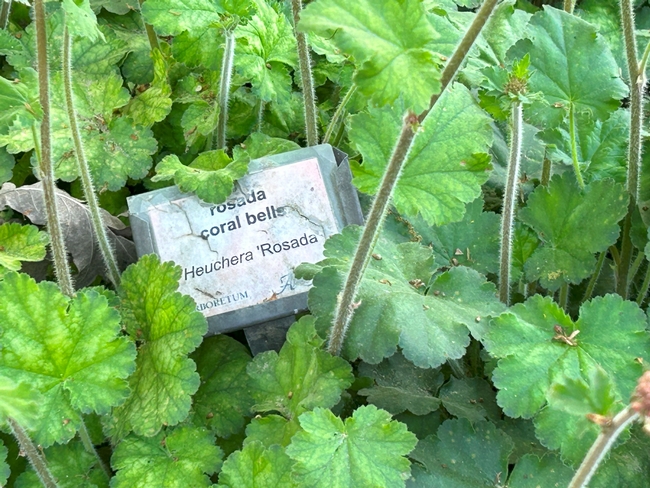
The Arboretum All-Stars began as a clever marketing strategy to help support the UC Davis Arboretum through its plant sales and have gone on to revolutionize the way Californians garden. Being water efficient in the landscape is indeed critical for a sustainable future.
To learn more about the UC Davis Arboretum Public Garden and Teaching Nursery plant sales, visit their website.
- Author: Lee Miller, Master Gardener
As summer arrives in full swing, gardens burst into life with a dazzling array of vibrant, sun-loving plants. From bold blooms to lush foliage, the summer season offers an abundance of botanical beauty perfect for creating a stunning, thriving garden.
PERENNIAL FLOWER: Herbaceous peony. These perennials excel when planted in full sun to partial shade, and when they're established, they are astoundingly long lived with some varieties living over 100 years. I can attest to their longevity as at my previous home there were peonies planted years before I moved in that were still blooming 42 years later when I moved away. These perennials are generally shipped in pots or as bare root tubers and should be planted in the fall, in an area that will receive at least 6 to 8 hours of sunlight each day. Peonies are sun lovers, although they may appreciate a little protection from the afternoon sun in the Central Valley. A well-drained, slightly acidic soil works for their success. If your garden features heavy clay, amend it with compost or a bit of loam to combat alkalinity and pooling water. Herbaceous peonies grow 2 or 3 feet tall with a spread of 2 to 4 feet and are very low maintenance. The photo below is of a Duchesse de Nemours herbaceous peony planted about 4 years ago and blooming in my yard.
HERB: Cinnamon basil (Ocimum basilicum). The term "cinnamon basil" can refer to a number of different varieties of basil, which is a bit confusing. Cinnamon basil is also known as Mexican spice basil and has a spicy, fragrant aroma and flavor. True cinnamon basil contains methylcinnamate, giving it a flavor reminiscent of cinnamon. Cinnamon basil has narrow, slightly serrated, dark green, shiny leaves with reddish-purple veins. It produces small, pink to purplish flowers from July to September. Cinnamon basil grows to 18 to 30 inches tall. It is easy to grow, requiring 6 to 8 hours of bright sunlight per day. Although it is often grown as an annual, it is a perennial in our zone 9. Cinnamon basil is sometimes planted near tomatoes and roses to discourage pests such as whiteflies. It is used in teas and baked goods such as cookies and pies. It is also used in pastas, salads, jellies, and vinegars. Cinnamon basil can be used in dried arrangements and as a potpourri.
PERENNIAL SHRUB: Weigela is a shrub from Asia whose name is pronounced “why-gee-la.”Weigela comes in three colors: white, pink, and red. However, as the blooms of the white version age, they fade to pink, creating a layered multi-color show, as seen in the photo below of one I planted a few years ago.Weigela is deer resistant and attracts butterflies. Its arching, loose growth habit looks good in almost any garden. It is tolerant of shade.Weigela is an upright plant that can grow to 4 feet tall and 4 feet wide. Bloom time is in spring here. Mine was done blooming before May 1. However, plant breeders have been busy creating long-blooming Weigela such as Sonic Bloom®, which blooms heavily in the spring and continues to bloom from summer though the fall. It is a very dense shrub, approximately 5 feet high and 5 feet wide, with brilliant rosy pink blooms amid the dark green foliage.
- Author: Kathy Grant, Master Gardener
Being out and about in the cool, morning summer air can be a great source of joy and surprise as we encounter sudden beauty in our gardens. The slow-to-ripen strawberries and cherries suddenly are ripe all at once. Landscape flowers seemingly out of nowhere are in full bloom. Early summer's harvest brings savory cooking herbs, onions, and garlic to the table, as well as early potatoes and the last of the winter lettuce. Drying and curing will prolong the harvest. Carrots, Italian parsley, and beets are also for the picking. It is a rewarding time of year to wander and explore all our herbaceous borders and beds, so be sure to head out with your favorite gathering basket and a pair of clippers, while the day is still young.
Here are a few of my current garden favorites for storing up for the year:
Herbs—Most herbs are best harvested before the plants begin to flower. Clip off bundles of leafy stems and hang to dry, or leave in piles on a cloth, near an open window. Once crisp to the touch, a few weeks later, rub off the leaves, compost the twigs, and put dried herbs in a closed plastic bag or jar. Label and store for use. Small jars of dried herbs make wonderful gifts for friends or family. This year our family has dried oregano, thyme, and sage, ready for use in the kitchen.
Dried flowers for wreaths—Many flowers air dry well for posies or wreaths, and can be harvested and hung in many clever ways. One of my favorite flowers at this time of year is the yellow lollipop-looking flower, Craspedia, which, according to Wikipedia, “is a genus of flowering plants in the family Asteraceae commonly known as billy buttons, billy balls, and woollyheads.” Another favorite for bouquets or wreaths is German statice. UC has recommendations for storing. I simply hang in small bundles near good air flow. I have made a beautiful 16-inch wreath with a year's worth of dried flowers from a six-pack of colorful purple, mauve, and whitestatice transplants. About half of those plants are still going after two years in the garden.
Onions and garlic—Much debate circles around gardeners who can't agree when to harvest garlic. But generally, when the tops fall over, they are ready to harvest. Garlic leaves are a little less likely to flop, so look for the third leaf up from bulb drying out. Harvest gently by digging, not pulling. Let them dry on the ground, or outdoors on a bench or table, in the shade. Both onions and garlic can be braided and hung, after the stems have fully dried out. Store indoors in a cool place, 55-70 degrees F.
Potatoes—We planted our potatoes around St. Paddy's Day, March 17, and the plants started to flower in early June. Harvest is generally 90-120 days after planting, and the signal of maturity is when the tops flop and die back. We have learned not to let the potatoes go much past this point, because they get too big and don't seem to store well. For flavor, smaller is better.
There is also still plenty of time to plant a summer garden for fall harvest. Get yourself a good garden planting chart for success, for example, this one from the Master Gardener Handbook. The San Joaquin Valley is blessed to have a year-round growing season. By thinking ahead, you can begin to enjoy the fruits, veggies, and herbs of your labor and have plenty to share with friends.
- Author: Lee Miller, UCCE Master Gardener
Question: A few of my rose bloom stems have curled downward and I wonder what causes this?
This is not an uncommon phenomenon to see in the rose garden and is usually caused by a pest, the raspberry horntail, Hartigia cressoni. Rose cane tips wilt, droop, discolor and die back. This problem can also be caused by other rose culture factors such as over-irrigation and lack of soil aeration, but a close look can identify if the problem is caused by the horntail. If you see a small, circular discoloration of the cane, especially where the second and third leaves from the tip attach to the cane, the raspberry horntail is the problem. This area is where female wasp inserts her egg to develop and where the larva feeds inside the cane. Canes may also become slightly swollen when a larva has fed inside. Cutting open the affected area will expose a tunnel with brown, granular frass (excrement) and sometimes an immature raspberry horntail or its cast skin if the wasp has left. The horntail can also be a pest of other cane-producing plants, such as blackberries and raspberries, hence the name.
A description of the eggs, larvae and adult horntail as well as other information is provided in this publication of the UC Integrated Pest Management program:


